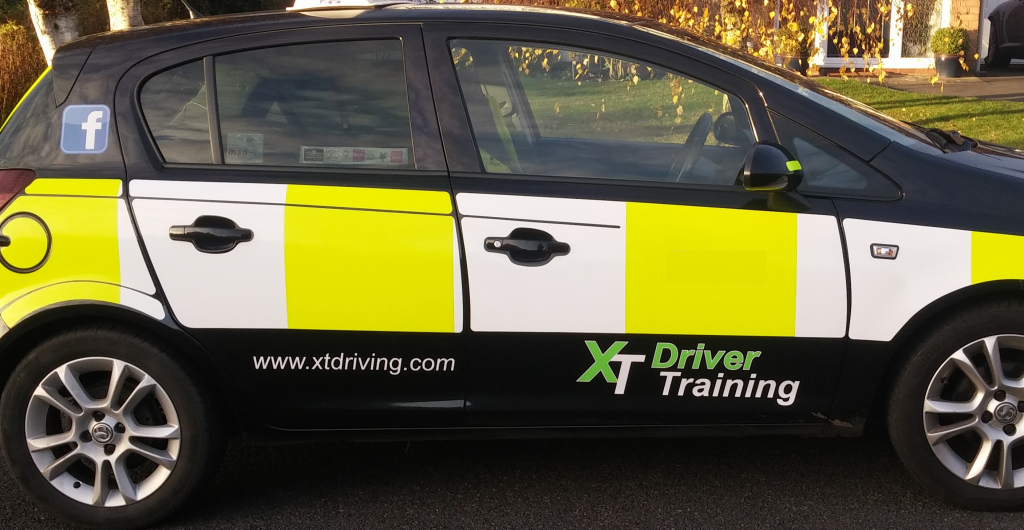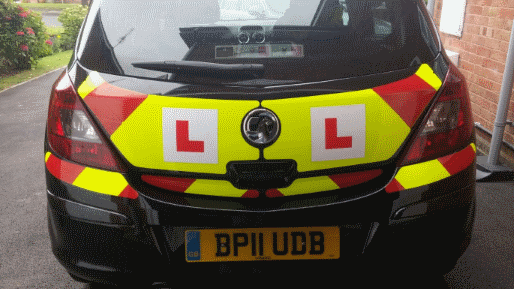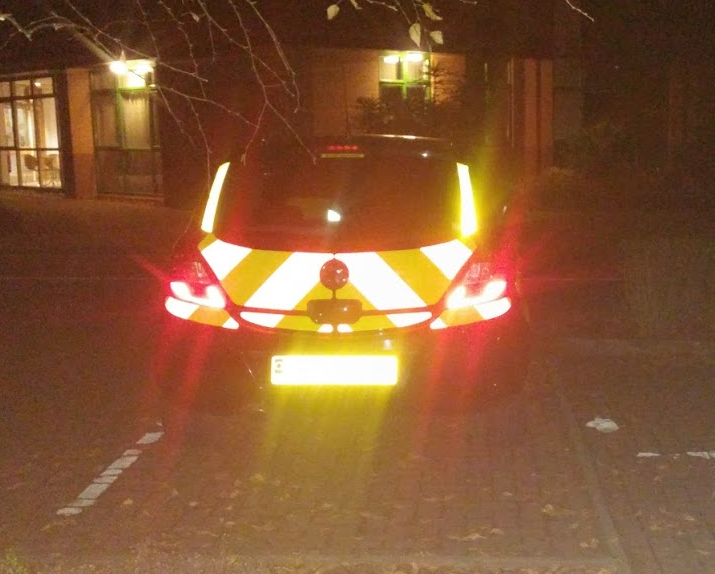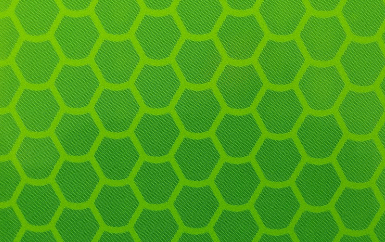The distinctive livery used on the Corsa is called Battenburg. It was originally developed by the Home Office in 1998 as a High-Conspicuity Livery for Police Vehicles used on motorways and dual carriageways.
It was originally developed by the Home Office in 1998 as a High-Conspicuity Livery for Police Vehicles used on motorways and dual carriageways.
The main requirements were:
- Visible throughout the day and night and capable of being seen from a minimum viewing distance of 500 metres from on-coming road users;
- The 500 metres minimum distance condition should apply during daylight hours in rain, mist, etc., though not necessarily in heavy rain or fog.
This makes it ideal for increased safety and visibility in a training vehicle where you’ll often be practising manoeuvres and moving away and stopping on the side of the road, especially in the low light conditions at this time of year.
(The Minimum illumination distance at night was defined as that which is provided by an approaching vehicle with headlights set at the normal dipped position. This applies without the roof lighting in operation on a police vehicle, since it is possible that this equipment can fail)
It was also found during initial research that the sides and rear of the vehicle are the areas that benefit most from having maximum conspicuity as it’s these areas that passing motorists will see first when vehicles are parked on the near-side of the road – whereas the front of the vehicle is usually only seen in rear view mirrors.
The Half-Battenburg design fitted on the Corsa (there is only one row of squares), was specifically designed and tested for ‘visually cluttered’ urban environments, where it was found to be as effective as a full-battenburg design.
The rear design is a standard “Chapter 8” marking which is considered Department of Transport best practice and the minimum standard (for vehicles frequently stopping on roads – such as works or inspection purposes, deliveries, emergency vehicles etc)
You can see how effective the rear design is at night in the two photos below, in the second photo the only illumination was from the camera flash, demonstrating the safety benefits of the rear markings when parked on the side of the road, in the night time.
Other than the Emergency Services, vehicles are subject to lighting regulations, which say a reflector is to be classed as a light. (for example having a blue reflector would be the same in law as fitting a blue light to the vehicle), which is why some of the markings are reflective and some are just fluorescent.
The yellow reflective markings which are made from a honeycomb material (close up below) can be a fitted all round the vehicle,
but only red reflectors can be used on the rear and white on the front, which is why the white side marking cannot be reflective.
The last major Police Force to change to the Battenburg design was the Metropolitain Police who started the switchover in 2012
You can read the original briefing document by the Home Office Police Scientific Department here
The design has now spread worldwide, in use in the following countries:-
- United States of America – Battenburg livery cited as the only example of International Best Practice by the Federal Emergency Management Agency, US Department of Homeland Security
- Sweden
- Switzerland
- New Zealand
- Barbados
- Hong Kong
- Republic of Ireland
- Czech republic




